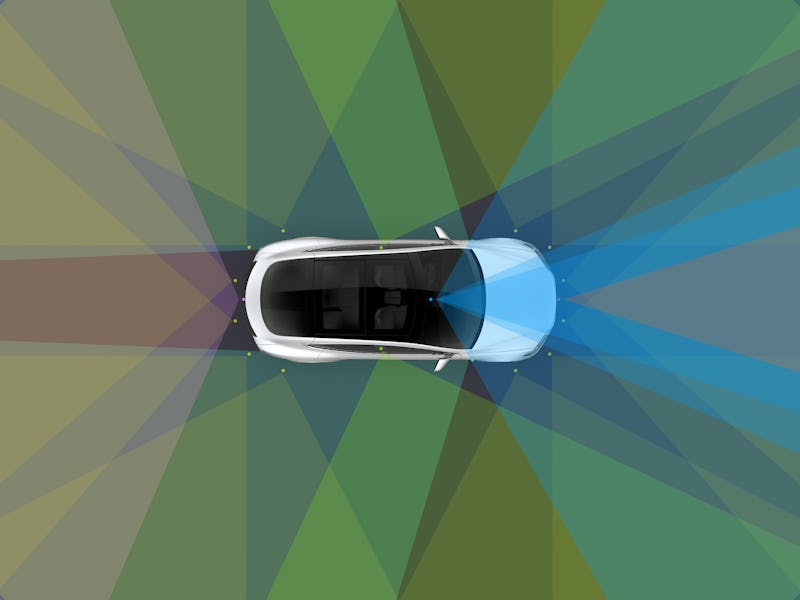
Tesla’s full self-driving chip is just around the corner, CEO Elon Musk teased on Tuesday, amid reports that the company’s latest software update makes impressive progress on the neural net powering its semi-autonomous Autopilot solution. Musk claimed that the new chip, which offers a speed boost over the Nvidia Drive PX 2 found in current cars, will start shipping in all new production cars in around six months time.
The announcement is an important step to Tesla’s ambitions to power full, point-to-point, autonomous driving. Musk announced in October 2016 that all new cars would ship with the necessary sensors to enable full autonomy at a later date. The new sensor suite was accompanied by a switch away from the MobilEye-powered Autopilot solution to one powered by Tesla’s own software and the Nvidia chip, a solution dubbed “Hardware 2.” Buyers could pre-order full autonomy for $3,000 or pay $5,000 after the feature launches, dependent on an “enhanced Autopilot” upgrade that costs $5,000 before purchase and $6,000 after purchase. The company announced in August that it had spent that last two to three years developing a chip to power full autonomy, a solution dubbed “Hardware 3,” and pre-order holders would receive the chip as a free upgrade.
Tuesday’s comments provide some interesting updates to Musk’s previous plans. In August he stated that the chip itself would probably launch in around four to six months, but that while those that pre-order full self-driving will receive the chip, “it isn’t needed just for enhanced Autopilot.” Musk’s latest comments suggests the company plans to shift production to use the chip in all new cars as part of the chip’s rollout, a move that could avoid complicating production lines.
Musk explained on Tuesday that the 9.0 software update, which started rolling out to consumers last month as an early tester release, improves the neural net powering the existing semi-autonomous Autopilot mode by around 400 percent in terms of useful operations per second. This is due to enabling the integrated graphics processing unit, and better use of the discrete graphics processor. The current system is more of a driver assist feature, driving along highways and working in other limited circumstances, but the software is expected to help Tesla meet its goals for full autonomy.
The real boosts will come with the hardware chip. Musk estimated on Tuesday that the chip would result in a 500 percent to 2,000 percent improvement over the existing system. The chip, designed by former iPhone chip designer Pete Bannon, is expected to process around 2,000 frames per second with full redundancy and fail-over, as opposed to the Nvidia chip’s rate of around 20 frames per second.
Despite the move to an in-house chip design, it seems there’s little ill feeling between Tesla and Nvidia. Musk said in the August earnings call that he’s “a big fan of Nvidia,” while Nvidia CEO Jensen Huang said in the same month that if Tesla’s chip efforts don’t work out, “you can give me a call and I’d be more than happy to help.” Nvidia artificial intelligence expert Alison Lowndes told Inverse days after the comments that the company is still working with Tesla.